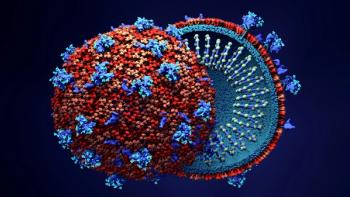
More Frequent HIV Testing Shows Significant Benefits in Demonstration Project
A demonstration project showed that frequent testing reduced the median time to diagnosis by nearly 14 months.
Early diagnosis of HIV is critical for both the patient and the public. It allows people who are infected to begin antiretroviral treatment, and the resulting suppression of viral load preserves the individual’s immune function while also preventing transmission to others.
Frequent testing is the key to early diagnosis for people in populations at higher risk for being infected with HIV.
The power of frequent screening for HIV was driven home by a study finding that infected members of at-risk groups received a much earlier diagnosis if they were tested at least twice a year. Their median time to diagnosis was nearly 14 months shorter than for those who were tested less often.
The
For
Nearly 30,000 clients had an initial negative HIV test. Of those, 5,710 adults received one or more additional tests of any kind and were not on THRIVE-provided preexposure prophylaxis (PrEP), which involves taking antiviral medication on a preventive basis and lowers the risk of infection (and raises the recommended frequency of HIV testing).
More than two-fifths were tested frequently (an average interval of 180 days or less between tests), with slightly higher rates among people aged 18 to 34 and slightly lower for older groups. Compared with white clients, Black clients were 21% and Hispanic clients 18% less likely to receive frequent testing.
Compared with cisgender heterosexual men, MSM were 25% more likely to get tested frequently, transgender women 24% more likely and cisgender women 15% more likely.
Black and Hispanic MSM and transgender women had the highest HIV incidence rates, mirroring the epidemiology of HIV in the United States.
The researchers found that HIV-positive clients who were tested at least once every six months were diagnosed more quickly — an average 137 days compared with 559 days for those who went longer between tests, wrote first author
If early diagnosis is soon followed by treatment, the shorter duration leads to faster viral suppression, reduced HIV-related morbidity and mortality and prevention of community transmission. In addition, every test offers an opportunity for public health workers to discuss other prevention strategies, such as PrEP.
The study also found that more frequent testing was more efficient, with a diagnostic yield — the number of positive patients detected divided by the total cohort size — of 1.5% compared with 0.8% for those tested less often.
Overall, the research article strongly supported more frequent testing in the THRIVE demonstration project. But the Kimball and colleagues pointed out that existing barriers to HIV prevention services were beyond this project’s scope.
“Although interventions were implemented in THRIVE jurisdictions to increase community collaboration and to provide culturally sensitive and community-tailored HIV prevention services,” they concluded, “we observed disparities in the frequency of HIV testing. Additional long-term, multifaceted programs may be needed to increase HIV testing among persons in priority populations and to overcome the social and structural barriers that drive disparities in HIV incidence.”
Newsletter
Get the latest industry news, event updates, and more from Managed healthcare Executive.

















































